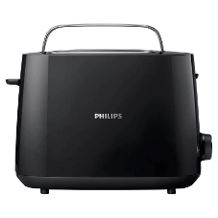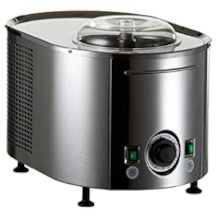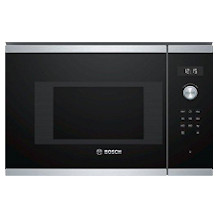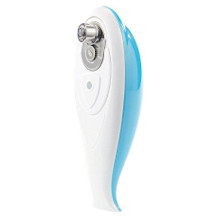Rice cooker purchasing advice: how to choose the right product
- What you need to know
- Rice cookers are electric appliances for preparing rice perfectly.
- Simple models usually have two modes: cooking rice and keeping it warm. Persian rice cookers are built to also scorch the bottom to make a crunchy tahdig crust.
- Digital rice cookers can prepare rice in a variety of different ways, and often can be used as slow cookers or to steam food.
- Capacity is either specified in volume (quarts or liters) or in cups – usually, one cup is enough for one hungry eater.
- Models with a keep-warm feature can keep rice ready to eat for hours, while those with a timer let you set a pot up to cook later in the day.
Whether for breakfast in the morning or dinner in the evening after a long day at work, rice is an essential part of many people’s diets around the world. However, amongst the pressures of everyday life, there is often hardly any time left to actually make it. Back in 1955, the Japanese company Toshiba came up with a solution, releasing the first automatic electric rice cooker. Since then, these mini appliances have gone through innovation after innovation, and are now more functional than ever. In fact, you no longer have to pay any attention to your rice while it is cooking. Just put some washed rice in, add the appropriate amount of water, press the button, and wait for it to automatically make perfectly cooked rice.
How do rice cookers work?
Rice cookers work using absorption. They heat rice and water to boiling point, such that the water evaporates into steam. As the hot steam envelops the rice, the rice absorbs it. As soon as the rice has absorbed all of the water – and the temperature increases above boiling point –, the rice cooker will reduce the power of its heating element and go into keep-warm mode. Depending on the variety, the ratio of rice to water is usually between 1:1 and 1:1.5. This system results in perfectly, evenly cooked rice.
Advantages and disadvantages of rice cookers
While you can cook rice in a pot on your stove, a good rice cooker will always provide perfect results. You can forget rice boiling over the edges or burning to the bottom of a pot. Likewise, there’s no need to pay attention to your rice as it cooks, meaning you can do other things instead. Rice cookers are extremely easy to use – just fill the pot, select the programme, and press start. After cooking, most models will automatically switch to keep-warm mode. This means you can prepare rice and eat it later without having to warm it up again – great for lunch in the office or at home.
Premium models often have different modes depending on the type of rice you are cooking and your desired consistency. Some also have settings for stews, porridge, cakes, and steam cooking.
Since the rice is cooked via water absorption, all of the nutrients in the rice stay inside. By contrast, boiling rice in water and then draining it results in the loss of nutrients (in the discarded water).
Rice cookers are a great option for small apartments which don’t have a fully kitted-out kitchen. However, they do take up space, and are difficult to put away if you want to store them when not in use.
Powerful, feature-rich rice cookers are much more expensive than basic models. Since lots of premium rice cookers come from Asia, it can also sometimes be difficult to set them up if they don’t come with a translated manual.
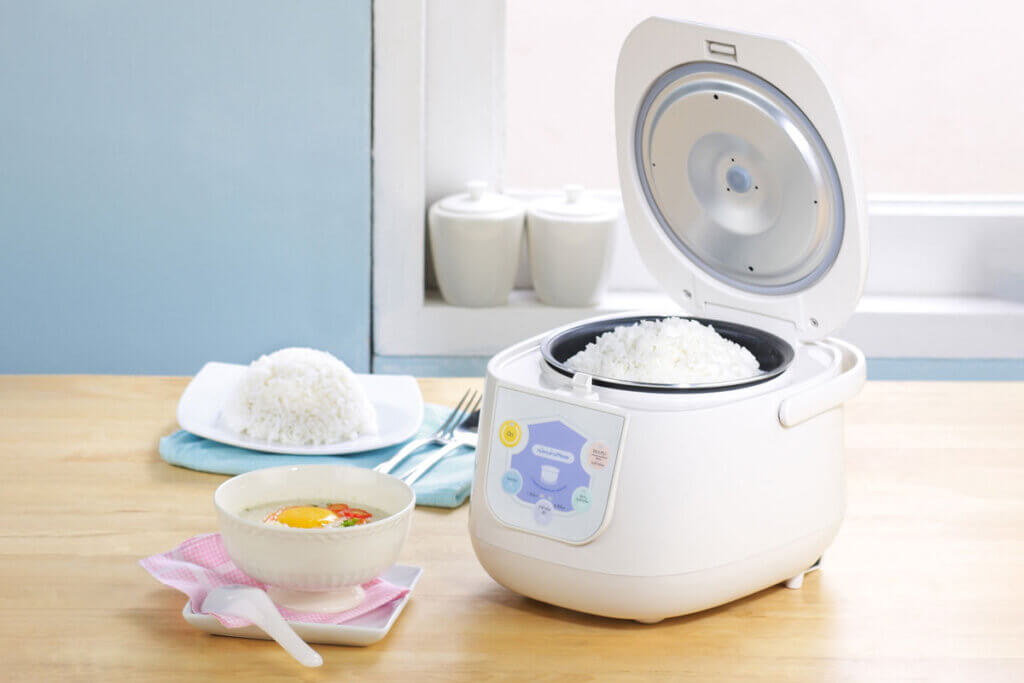
Types of rice cooker
From the outside, electric rice cookers look a lot like slow cookers. However, on the inside they have a removable non-stick rice pot. This fits into the outer housing, within which are the heating element and temperature sensor. There is a lot of variety when it comes to rice cookers, from simple classic models through to high-tech digital ones which heat the rice using induction or even steam.
Classic rice cookers
Classic electric rice cookers are designed to do two things, and do them well: cook rice and keep it warm. To do this, they have a heating element. As soon as the rice is cooked, the cooker will automatically switch into keep-warm mode. You can usually choose the mode using a dial or switch. Prices tend to start at around $20, but these models aren’t designed for daily use – if you use one of these every day, it’s likely it will start to malfunction after a few months. When using a classic rice cooker, for the best results you should let you rice soak in the water for 30 minutes before turning the heating element on, and serve the cooked rice 15 minutes after it first finishes cooking.
Persian rice cookers
Persian rice cookers are specially designed to produce a crispy scorched tahdig crust on the bottom of the rice. They are thus neither classic rice cookers, nor digital ones. When setting one up before cooking, you can either choose between conventional and crispy rice. Most models have a dial which you can use to adjust how crispy you want the bottom to be.
Digital rice cookers
Digital rice cookers have a computer chip inside which controls the entire cooking process. The chip is connected to thermal sensors, which it uses to adjust the temperature of the heating element, and the amount of time the rice cooks for. This means there’s no need to soak your rice before cooking like with classic rice cookers – the computer chip calculates for this. Most models have useful features like a timer and a digital display.
Most digital rice cookers come from Japan and South Korea, or are designed based on pre-existing models from these countries. The exact way the computer chips inside are programmed varies depending on make and model. You’ll often find terms such as Micom, Micon, or Micon-system for these devices, which is used to indicate the presence of a microcomputer, although rarely on models from Western manufacturers. Micom rice cookers mostly use fuzzy logic computing to adjust cooking times and temperatures for the best results.
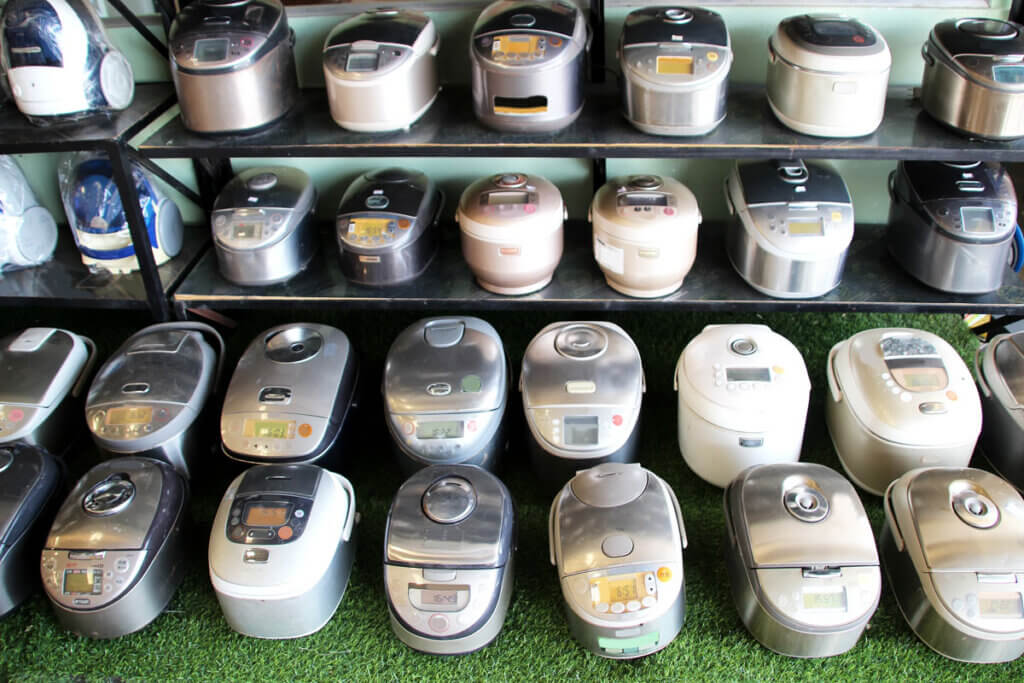
What is fuzzy logic?
Fuzzy logic is a theory used to describe situations in which there is no absolute yes or no answer. It is used in a variety of fields, from medicine through to AI. Machines that are built using a fuzzy logic groundwork are able to detect changing situations and subsequently adapt the way they work. In the case of rice cookers, models using fuzzy logic adapt to different types of rice, their age and harness, as well as the user’s desired consistency. For example, rice cookers with fuzzy logic can identify that brown rice needs different treatment to say, jasmine or sushi rice. It also allows you to cook other ingredients like grains, and make different dishes such as congee, scorched rice, and even cake.
Digital rice cookers also often cook in multiple stages – it’s common to find devices that have seven stages. This means that the cooker won’t immediately heat water to its boiling point, but instead will first have stages for preheating and water absorption, as well as a final heating stage where the temperature reaches boiling point. Once the rice is cooked, the cooker will also gradually lower the temperature, rather than just switching straight to keep warm mode.
Induction rice cookers
Induction rice cookers are the premium option on the market. You can tell these models apart because manufacturers often use the abbreviation IH (induction heating) for them. Instead of having a heating element in the housing, they use magnetic coils which generate an alternating electromagnetic field. This means that instead of heating the entire machine, only the rice pot and its contents heat up. Induction rice cookers, just as digital rice cookers, work using a microchip which uses fuzzy logic. Induction technology allows for even more control of the cooking, which in combination with fuzzy logic can produce great results.
Within the induction category, there is one specific type of rice cooker that stands above the rest. At the top of the class you’ll find models that cook using both induction and pressure. These devices are often branded as ‘Pressure IH’. Just as with pressure cookers, these rice cookers use steam pressure to cook rice extremely quickly. This is very powerful in combination with induction technology, which ensures that the rice cooks evenly at the perfect temperature.
Importing rice cookers and voltage
Different countries use different mains voltages. You should know that if you plan on importing a rice cooker from abroad, you need to check what mains voltage it is compatible with. For example, Japanese mains voltage is standardized at 100 volts, whereas EU mains power is 230 volts. In the US it is 120 volts. Some manufacturers will produce models which are compatible with your local voltage, but you will need to check if you’re buying the right model.
Other ways to get perfect rice
As they say, there are many ways to skin a cat. Likewise, you don’t have to use a rice cooker or cooking pot to make great rice. If you don’t make rice that often and thus don’t want to buy a separate appliance just for it, you might be interested in a microwave rice cooker, steam cooker, or even a multi-cooker.
Microwave rice cookers
Microwave rice cookers aren’t electrical devices. Instead, they are plastic containers with an insert and a lid designed to trap and distribute steam while your rice cooks in the microwave. All you have to do is fill the container with rice and water and put it in the microwave. Wait 15 minutes, and your rice will be ready.
These utensils are great for smaller households who don’t cook rice that often. They’re a great entry model which means you don’t have to buy yet another electric appliance. Since they’re basically just a plastic pot, you can store and transport them extremely easily.
Microwave rice cookers can be used for lots of different types of rice and cooking styles. The main thing you should be aware of is that they don’t work for dishes in which the rice needs to be stirred and absorb a lot of liquid, like risotto, paella, and rice pudding. Whole grain rice is also not suitable for microwave cooking.
Steam cookers
You can also cook rice using steam. To do this, you’ll either need a bamboo steaming basket or an electric steamer. If you’re using the former, traditional method, you’ll need to pre-soak your rice for several hours. This reduces cooking time and will produce fluffy results. Bamboo steamers are best for starchy (like jasmine or basmati) and glutinous rice. You can also use them for other foods like vegetables and fish.
Multi-cookers
You can also use multi-cookers for rice. In fact, they aren’t that different from digital rice cookers both on the inside and out. The main difference is that they aren’t primarily designed for rice.
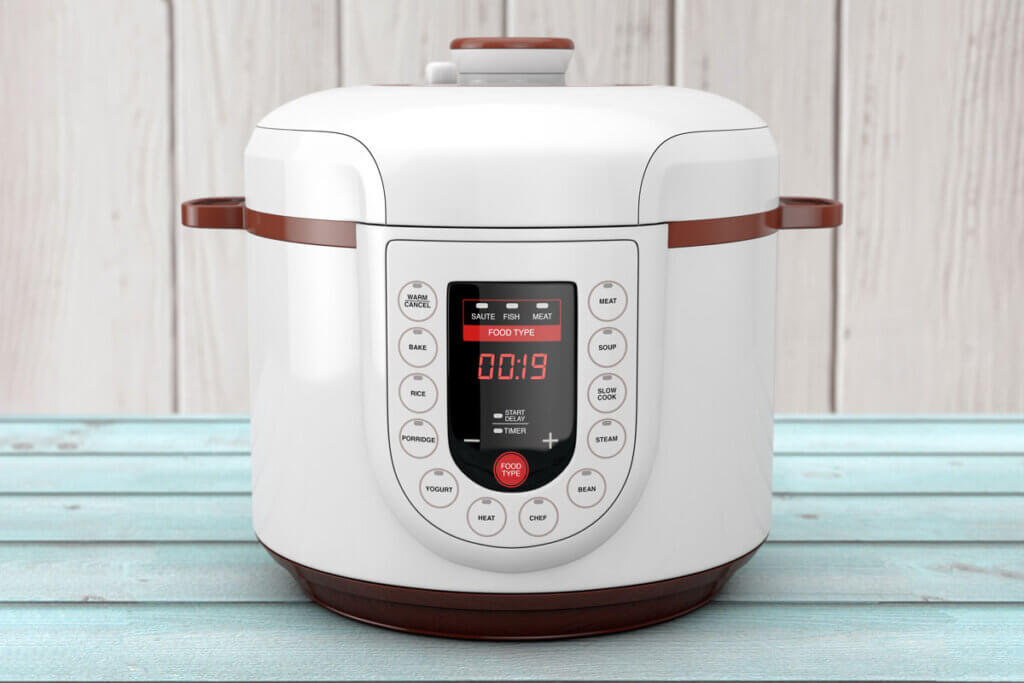
What’s the difference between a multi-cooker and a digital rice cooker?
Mid and top-end digital rice cookers are multifunctional machines which can be used to prepare more than just rice. They are quite similar to multi-cookers, which thanks to their different settings let you combine multiple devices in one. Compared to digital rice cookers, multi-cookers tend to only have one setting for rice, rather than multiple settings for different varieties and styles of rice dishes. In other words, multi-cookers are generalists, while digital rice cookers are specialists.
Buying tips
When it comes to picking a rice cooker, you need to ask yourself a few questions. For example, do you just want to make normal rice, or do you want to be able to make other things like a scorched rice crust? Mid and high-end rice cookers let you do everything, but you won’t need all of their features most of the time. Other than choosing the features, the main things to consider are size, capacity, materials, and quality.
Size and capacity
Rice cookers come in different shapes and sizes, from ones designed for single households up to commercial machines suitable for restaurants. When picking a size, you should know that rice cookers work best when half filled. Some manufacturers will give capacity in volume, but not always. If they do, as a rule, a cooker with a one quart (1L) capacity can feed five.
Most manufacturers give capacity in cups. The main thing to watch out for is that US cups are slightly larger than Japanese cups (US are 240ml, Japanese are 200ml). One cup of cooked rice is equal to a single portion, so if you live by yourself or with your partner then a three cup machine will work for you, a four-person household would do well to get a five or six cup machine.
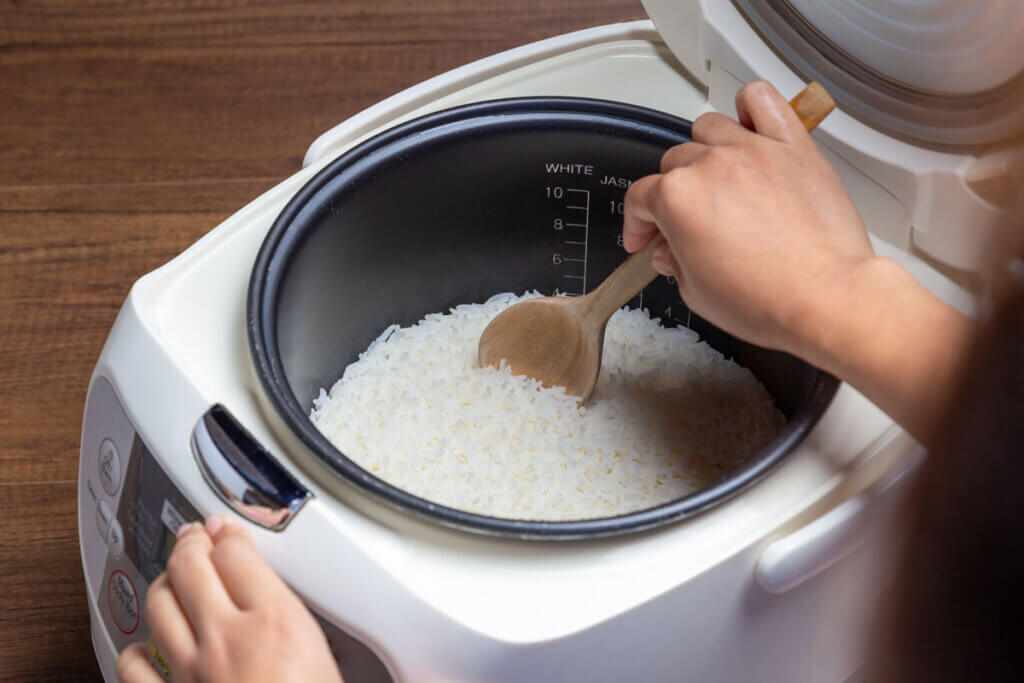
If you import a rice cooker from Japan, you may also find another unit of measurement: gō. This is a traditional Japanese amount used for one portion of rice and a cup of sake. While the unit is no longer official in Japan, some manufacturers include 1-gō measuring cups with their rice cookers. One gō is equal to 150 grams of Japanese short-grain rice, or 3⁄4 of a metric cup. In terms of portions, one gō will feed 1-2 people, three gō will feed 3-5 people, and five gō will feed a large family.
Material
The inner pot of electric rice cookers is usually made from aluminum or stainless steel. Both metals provide good qualities for rice cookery. What is more important is the non-stick coating on the inside of the pot. It needs to be smooth and not damaged in any way. Most manufacturers use either Teflon or ceramic for the inside of the pot. Outer housings tend to be made from plastic or stainless steel. If you go for a model made from plastic, make sure it is BPA free (Bisphenol A is harmful to your health if ingested). You can also get cool-touch housings which prevent you from burning your hand. Cool, non-slip grips are a good option if you’re planning on carrying your rice cooker around with rice inside.
Preparation time
Cooking time can vary a lot from model to model. Surprisingly, price and power don’t always equate to speed when it comes to rice cookers. Some models are designed to cook rice gently, and as such take a while to do so. This said, there are also digital cookers with a quick mode, which will prepare rice fast. Induction-powered cookers are usually faster than those with normal heating elements. Microwave rice cooking containers are often the fastest. Bamboo steamers can cook rice in half an hour – but you will have to soak it beforehand.
Features
Even the most basic electric rice cookers tend to have a keep-warm mode. However, if you plan on spending a bit more money, these are the additional features you should know about when picking a model.
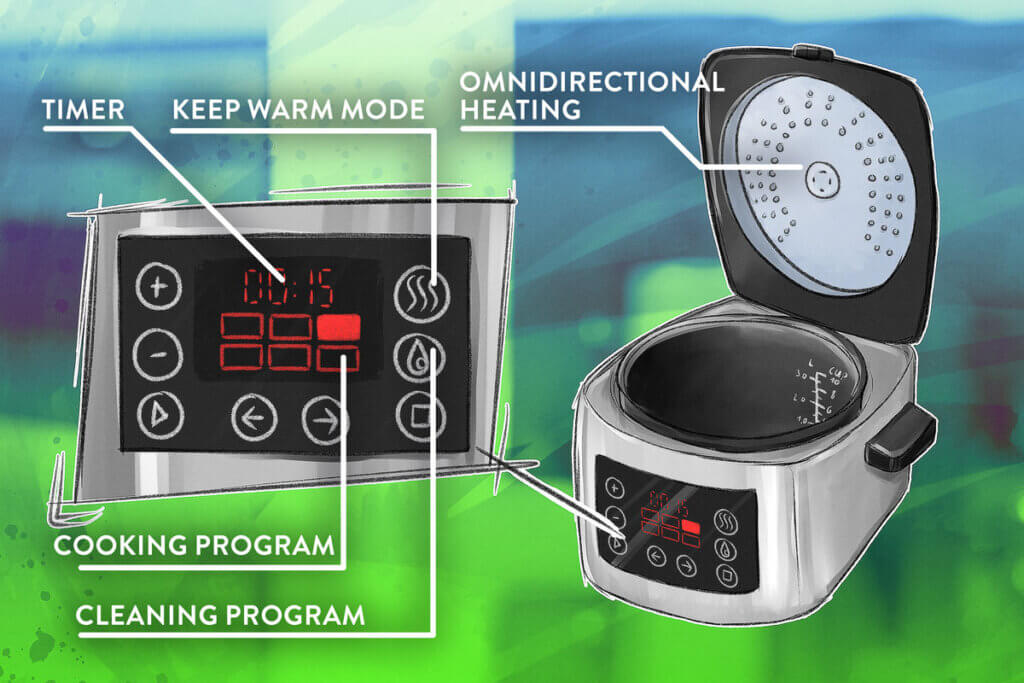
Having a timer on your rice cooker is extremely practical. It means you can wash your rice and put it in the cooker, and set the timer such that you have perfect warm rice ready when you get home in the evening.
Rice cookers with a 3D heating system cook the rice from all sides, rather than just from the bottom. This feature can sometimes be found on entry-level cookers.
Once you get into the mid-range, you’ll start to find rice cookers which have a variety of different cooking modes. These include settings for different rice types and preparation methods, as well as modes for steaming, baking, and slow cooking. You can sometimes also get combination devices, such as ones which let you steam food at the same time as your rice is cooking.
Some top-end rice cookers have a cleaning programme. This varies from manufacturer to manufacturer, but can be a steam jet which cleans the inside of the rice pot.
Typical rice programmes
Mid-priced and top-end rice cookers usually have a lot of different cooking modes. Depending on the model, cookers can have different programmes for just white and brown rice, or they can have specific modes for varieties like:
- Sushi rice
- Sweet rice
- Long and short grain rice
- Round grain rice
- Mixed rice
Some premium rice cookers have settings for different types of rice dishes:
Congee is a rice porridge common in Asia. The Chinese version is particularly well-known in the west, but it is actually eaten across the continent. Congee is easily digestible, which means it is often used to help with stomach complaints. To make it, the ratio of rice to water is roughly one to ten.
GABA mode is for preparing brown rice. More specifically, it cooks the rice at a specific temperature for a long time such that it germinates. The reason? Germination increases the levels of gamma-aminobutyric acid (GABA) in the rice. GABA is an inhibitory neurotransmitter, and can be used to treat stress and anxiety. In terms of eating, GABA rice is nutty and soft. Since the rice needs to germinate, cooking times tend to be over three hours.
Thadig refers to rice dishes with a scorched crust. To get a crust on the bottom of the rice, the cooker will need to have the ability to heat the bottom more than the sides. You may need to get a special cooker, although some premium digital rice cookers can also make scorched crusts.
Quick Cook modes use steam pressure to shorten cooking times. While the rice will come out faster, it will be less fluffy as it has less time to absorb water.
Gentle cooking modes produce tender, fluffy rice. The payoff is that cooking time is longer.
Accessories
Rice cookers usually come with a special spoon and cup for measuring and serving rice. If you go for a model with a steam cooking mode, it will most likely have a steam cooking insert which lets you cook other ingredients while your rice cooks. This will either separate the rice from the other ingredients or go on top of the rice. If you import your rice cooker, you may need to get a plug socket adapter. Alternatively, if the power cable is removable, you might be able to replace it.
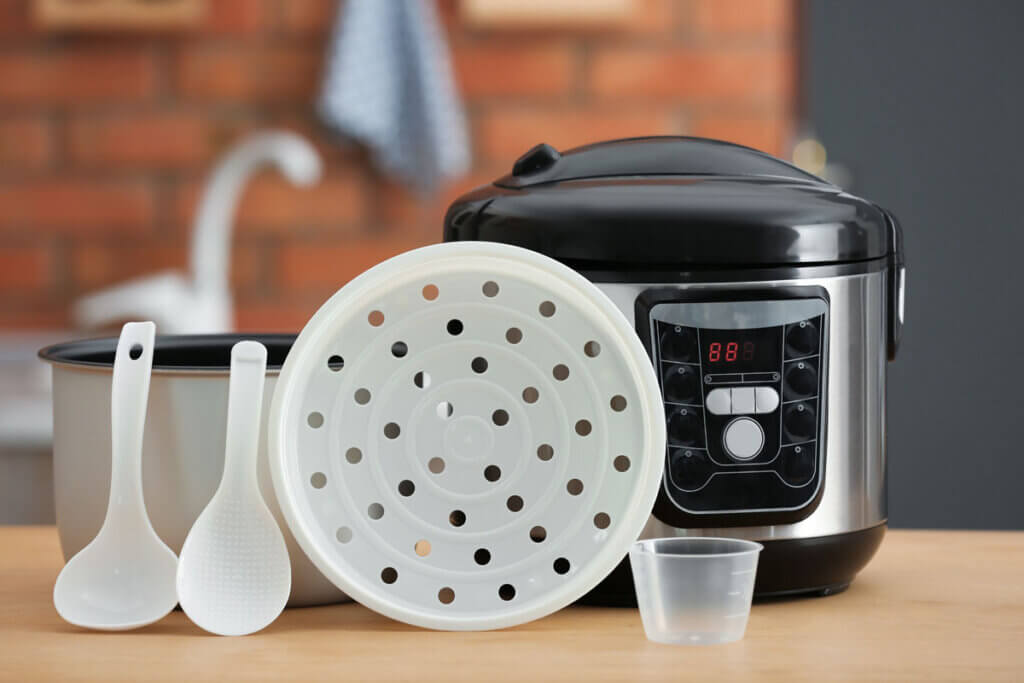
Usage tips
Although the operation of a rice cooker is so simple that consumers can quickly prepare their first rice, the result is even better with the help of a few tips.
How to make perfect rice in a rice cooker?
The first thing to do is to determine the amount of rice in the measuring cup provided. Before you cook the rice in the rice cooker, it is advisable to wash off the excess starch, as this can settle on the bottom. To do this, put the rice in the pot with cold water and stir it by hand. Then carefully pour off the water. It is advisable to repeat this step until the water runs clear. About as much water as rice is needed for the actual cooking process. The exact ratio depends on the type of rice, and it can be found in the instructions for use of the appliance. If you have several programmes to choose from, you should select the one you want and start the rice cooker. For simple appliances without programmes, it is advisable to wait about ten minutes before starting and let the rice rest for a few minutes after the cooking time has elapsed. This improves the taste. A wooden or plastic rice spoon will not damage the non-stick coating.
Can I make rice pudding in a rice cooker?
It is not possible to prepare rice pudding with cow’s milk in a rice cooker. This is because the milk quickly boils over if you do not stir it regularly. However, rice pudding can be cooked in a rice cooker with a vegetable alternative because, unlike animal milk, plant milk does not tend to burn. Those who are keen to experiment can also prepare rice pudding with plant milk and water in different proportions and test out different types of plant milk.
Image 1: © John Kasawa / stock.adobe.com | Image 2: © Igor Sokolov / stock.adobe.com | Image 3: © doomu / stock.adobe.com | Image 4: © Kt Stock / stock.adobe.com | Image 5: © FinalCheck | Image 6: © New Africa / stock.adobe.com

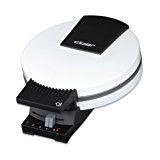
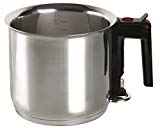
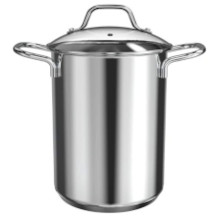
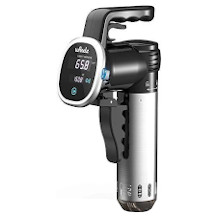
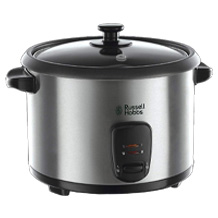
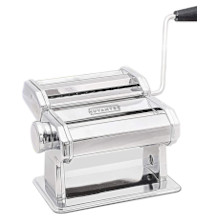
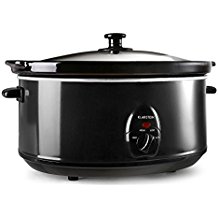
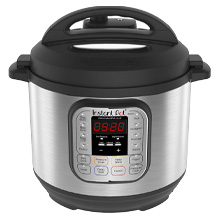
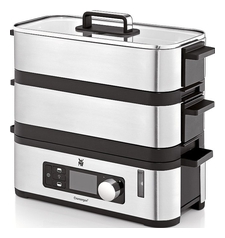


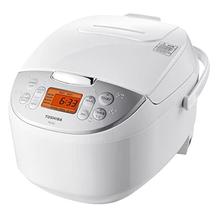
















 8,363 reviews
8,363 reviews






